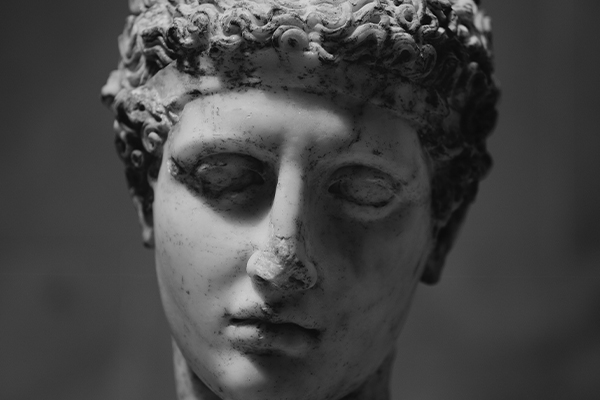The constant rise and decline of civilizations create value in objects that last longer than the civilizations themselves. Masterpieces and spectacles of art condense the countless blood and sweat of mankind, and also embody the characteristics of civilization in a certain period of time. Based on the understanding of mainstream Western art history, the source of Western art is ancient Greece and ancient Rome. This understanding is not wrong, but it overlooks an important link of early art development.
Closer observations of the visual art reveals that the real source of Western art is ancient Egyptian art. Although the brilliance of ancient Egyptian art was obscured by the later Greek art, the artistic seeds of the ancient Greece came partly from ancient Egypt. The transformation of artistic styles from ancient Egypt, ancient Greece, to ancient Rome reflect the evolution of civilization from full God to demi God, and finally to non-God.
Egyptian art and civilization are best characterized by the symbolic, religious, and hierarchical features of artworks. According to the book by Kaminsky, “the Egyptian knew there was a supreme being, but did not have sufficient knowledge of nature and man to know what this being was like and how he manifested himself. For this reason, the Egyptian artists were limited” (Kaminsky 187). As a result of the limitations in the understanding of natural and scientific laws, Egyptian art reveal highly symbolic and grand features. Architecture and sculpture are representative types of ancient Egyptian art, which are not only related to the sacrificial rites and burial customs, but also “large monuments as symbols of authority” (Bard 5). The manifestations of the religious beliefs are simple geometrical forms in huge sizes. The geometric forms are extremely exaggerated, and the style is huge, heavy, and mysterious. The overall grandness of scale compensates for the lack of motion and fluidity.
Similar to the shape of a pyramid, the ruling class in ancient Egypt occupy the peak of the pyramid and is considered to have the equal status of a full God. As early as 3200 BC, the image of King Narmer, who unified the upper and lower Egypt, was permanently carved on the stone slab known as the Narmer Palette. This stone slab, which has an initiation meaning to the spirit of Egyptian art, has embossed patterns on both sides. The patterns on both sides are layered. According to Bard (3), “a strong centralized state” and “a very hierarchical social structure can be inferred from the mortuary evidence.” The layered Narmer Palette is the perfect embodiment of such social hierarchy. The layered consciousness of the Narmer Palette and the frontality of the characters have become the fixed pattern of ancient Egyptian painting and relief, revealing the rigid, symbolic, and hierarchical features of ancient Egyptian civilization.
Compared with the majestic and rigid art style of the ancient Egyptians, the creativity of the ancient Greeks lies in bringing life to lifeless stone sculptures, with the gradual transition from the sublime divinity to the secular humanity and the ideal state of life. “By the imperial period, the notion that humans are ‘a portion of God’ had become a commonplace in philosophical circles” (Bremmer 21). The artistic performance of the ancient Greeks has a lot to do with their religious beliefs and life attitudes. Ancient Greece believed in polytheism. The world of the gods is also like the social organization of the human world, with the highest rulers and officials who perform their duties. Each god has its own personality story background. The unique advantage of these gods is that they can enjoy the pleasure of love, beauty, elegance, and wine without the danger of disease, aging and death. Consequently, there was no longer a rigid boundary between man and god like in ancient Egypt.
In the reflection of Greek civilization through art, besides the purposeful transformation of ancient Egyptian art, the most important thing is the pursuit of a rational world of beauty and ideals. According to British art historian Ernst Hans Gombrich (75) “The Egyptians had based their art on knowledge. The Greeks began to use their eyes”. The visual art of ancient Greece was never a mirror that faithfully reflected nature. Instead, artworks such as the Discobolus of Myron reveal that the ideal order can be grasped by the human mind through perception. The ideal order in the minds of the Greeks should be a harmonious proportion, which created a lasting influence on the study of the proportions of the human body in Greek sculpture. If the ancient Egyptians devoted themselves to the worship of full Gods, then the ancient Greek art was also about the celebration of demi-gods, the combination of divinity with idealism, beauty, and rationalism.
With the decline of ancient Greece and rise of ancient Rome, the artistic styles of Romans went through another transformation, deeply influence

